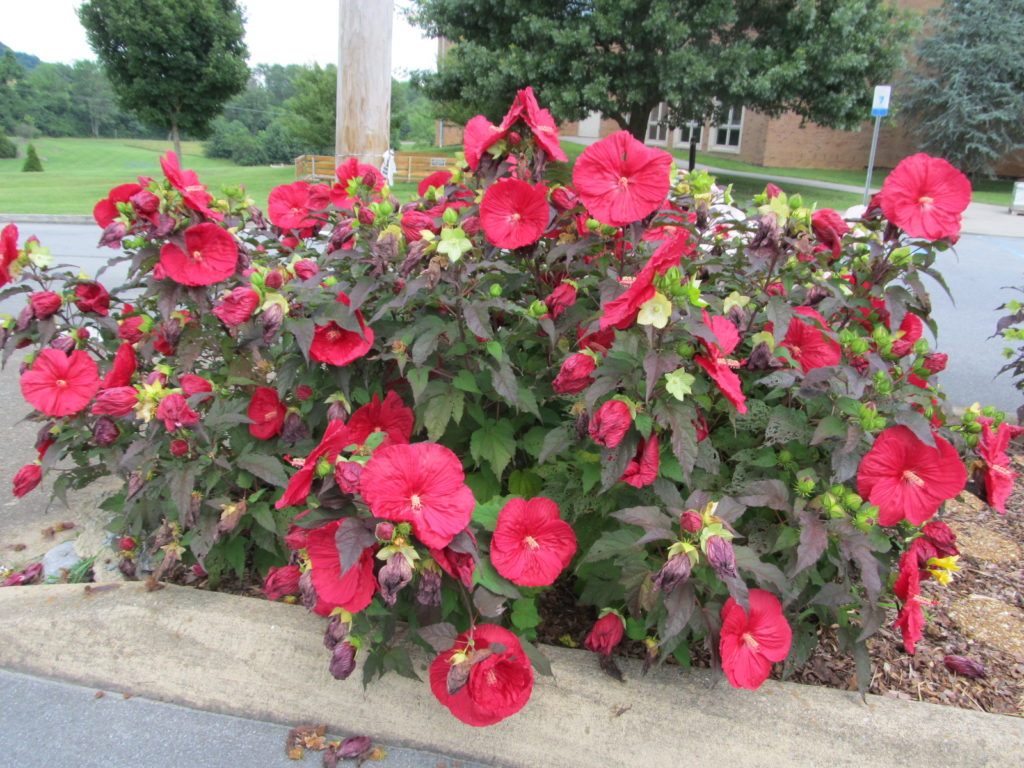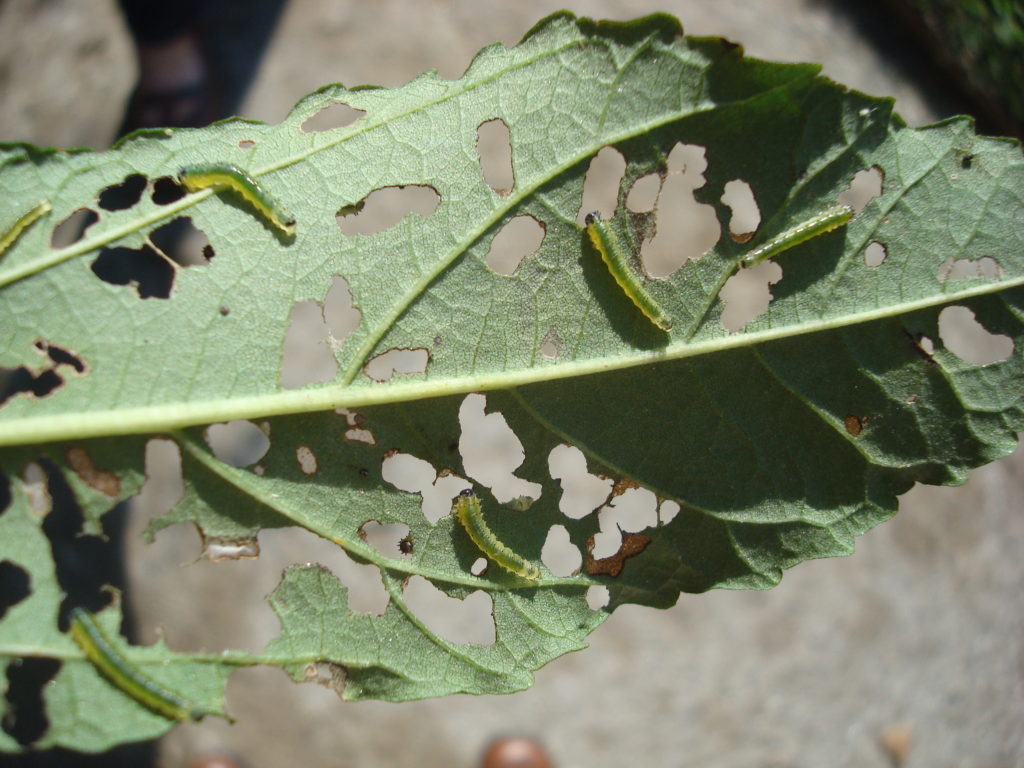
Mallows, hardy hibiscus, and perennial hibiscus (Hibiscus moscheutos) are vigorous shrub-like growers on sturdy 4-5 feet tall (and 2-4 feet wide) stems. The species is native to wetland areas from Ontario and Massachusetts south to Ohio, Indiana, Alabama and Florida.
Huge colorful 4-6(9) inch wide flowers have five overlapping petals with reddish-purple to dark crimson bases which form a sharply contrasting central eye. Flowers, your choice of white, creamy white, pink, and red, have a prominent and showy central staminal column of bright pale yellow anthers.
If site conditions are ideal, expect a long succession of large numbers of flowers, each bloom lasting only 1-2 days from July to September. New flowers open each day. Alternate, broad-ovate to lanceolate leaves (3-8 inches long) with toothed green margins above and white-hairy beneath. Most leaves exhibit 3-5 shallow lobes.

Hibiscus sawflies can cause a lot of foliage damage in a short time. On a warm humid morning you will find the greenish larvae on the backside of leaves, chewing between veins. A sawfly adult is a primitive wasp-like insect. Adult females have a saw-like blade at the tip of the abdomen that is utilized to cut slits into plant tissue into which they deposit eggs.
Insecticides like permethrin, cararyl (Sevin®), Conserve®, and insecticidal soap provide good control if sprayed on the entire plant. Imidacloprid, a systemic insecticide, can be applied to the soil around the plant before feeding activity is noticed. Sawflies are relatively easy to control with foliar sprays, but because hibiscus sawflies produce up to six generations in one season, susceptible plants need to be sprayed on numerous occasions.
Hibiscus sawfly also attacks other ornamentals hollyhock (Alcea rosea), and other hibiscus species. The insect shows little or no interest in other economically important hibiscus relatives, including cotton, okra and rose of Sharon.
Plant breeders are developing resistant plants that are less susceptible to the ravenous appetites of the sawfly. Three genotypes show promise in breeding for hibiscus with resistance to the hibiscus sawfly: H. acetosella, H. aculeateus, and H. grandiflora. New resistant varieties are now arriving at garden centers now with lots more coming in the near future.

 Posted in
Posted in 
